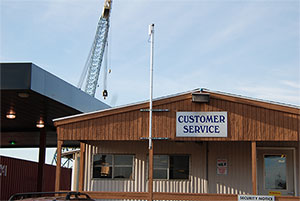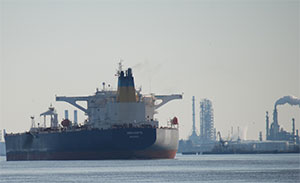 Penn Terminals, privately-owned, multi-purpose marine terminals on the Eastern Seaboard, was in the market for an IP camera surveillance system to cover its 88-acre perimeter and interior buildings.
Penn Terminals, privately-owned, multi-purpose marine terminals on the Eastern Seaboard, was in the market for an IP camera surveillance system to cover its 88-acre perimeter and interior buildings.
Penn's Terminal, Warehousing and Stevedoring Services are renowned for their efficiency in handling container, perishable, project, super sack, steel, pipes, forest products and other break-bulk cargoes. The facility is located in Eddystone, Pennsylvania, which is situated on the Delaware River six miles south of Philadelphia and 11 miles north of Wilmington, Delaware. It offers on-dock rail service by Conrail, CSX & Norfolk Southern.
Overcoming Obstacles with Wireless Solutions
Among the challenges to competing this installation, which began in October 2012 and was completed in January, 2013, was placing the IP cameras in the proper positions to cover very large areas, as well as achieving IR imaging along the river. Darry M. Voss of Danella Integrated Solutions served as the integrator on the project and explains that wireless gave them the flexibility needed without having to build new infrastructure at each location.
Danella's consultant on the project acquainted Voss with
Fluidmesh specs and capabilities, and, for the bid, Fluidmesh engineer and Regional Sales Manager Alex Clark explained the functionality and bandwidth capability to support the design. It made perfect sense for Penn Terminals.
 “Penn Terminals was interested in using high-performance video and thermal imaging to secure the facility and improve operations," Clark stated. "The cameras and sensors they chose demanded a high-performance network capable of high throughput and very low latency and jitter. To get the best camera views in between container stacks, along the river, and above the truck traffic, a multi-topology wireless network connecting poles, buildings, and remote locations was the natural choice. Without Fluidmesh, the customer’s budget would have forced them to use fewer cameras, placed in less than ideal locations, and construction would have taken much longer. We are proud to be part of the solution to keep Penn Terminals operating smoothly and efficiently."
“Penn Terminals was interested in using high-performance video and thermal imaging to secure the facility and improve operations," Clark stated. "The cameras and sensors they chose demanded a high-performance network capable of high throughput and very low latency and jitter. To get the best camera views in between container stacks, along the river, and above the truck traffic, a multi-topology wireless network connecting poles, buildings, and remote locations was the natural choice. Without Fluidmesh, the customer’s budget would have forced them to use fewer cameras, placed in less than ideal locations, and construction would have taken much longer. We are proud to be part of the solution to keep Penn Terminals operating smoothly and efficiently."
Configuration of the System
Voss installed three Fluidmesh 3100 radios on the Main Building and 13 Fluidmesh 1100s at each camera location that could not be hard wired. There is one FM1100 supporting six (6) IP cameras in the Banacol building. There is a combination of eleven (11) Fixed Arecont mega pixel IP cameras, thirteen (13) Siqura TKH 1080p PTZ IP cameras and two (2) FLIR D-series IR IP cameras. The head end consists of two ExacqVision servers built with storage requirements at 30fps, 85% motion for 30 days. Extreme data switches were installed in the Main Distribution Frame (MDF) and in the two Intermediate Distribution Frames (IDFs) within the facility.
The two Flir D-series IR IP cameras placed along the South and North ends of the terminal are located at the furthest points to provide IR and DLTV images of the waterfront. The capability of the Fluidmesh radios with the available frequencies and bandwidth needed for the data stream on both videos were a determining factor for the installation. The system is designed for future access to the Coast Guard for security along the waterfront.
ExacqVision client software was loaded on the computers of key Penn Terminals personnel with user's rights for the administration and viewing of cameras.
The Penn Terminals Security staff has full access to all views with three monitors in the guard shack. Views are set on pre-set tours covering the perimeter and loading and unloading of materials and activity within the facility.
Penn Security is a 24/7 operation that monitors the facility for safety and the loading and unloading of ships of containers, certain project cargoes such as railroad locomotives, earth movers and giant generators, steel cargoes such as coils, rebar and pipe, and forest cargoes such as plywood and lumber and perishables.
At the End of the Day
This project came with its own inherent challenges due to the size and scope of the facility and the number of locations that required cameras; however, the system is meeting the needs of the client beautifully.
"From a security monitoring perspective, the new system has greatly enhanced our security system," noted John Timmons, director of security for Penn Terminals. "The ability to place cameras in strategic locations and have them wirelessly transmit video signals and control in real-time is a 100% improvement."